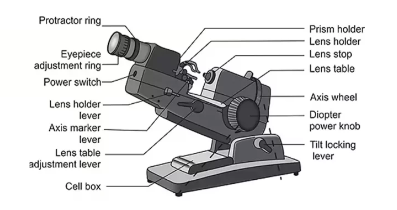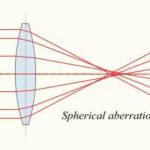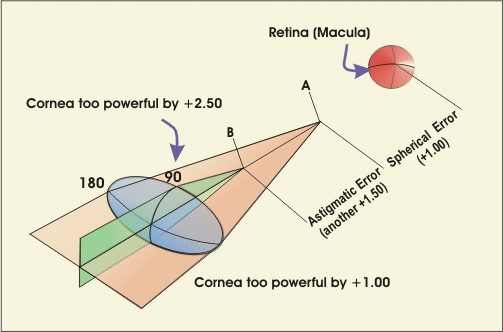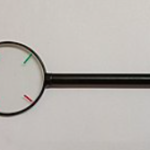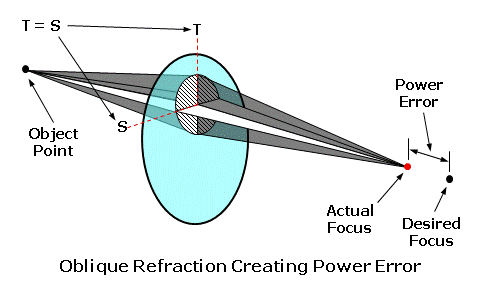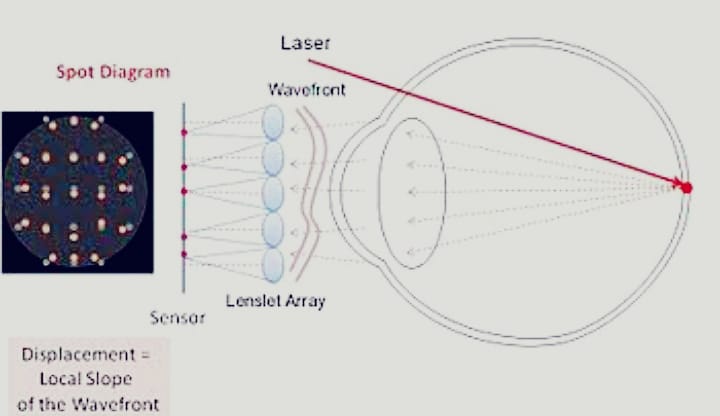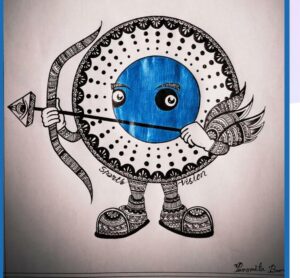Lensometry is an ophthalmic procedure that helps a clinician to either to assess the:
- Spherical power.
- Cylinder power.
- Cylinder axis.
- Optical center.
- Prism reference point.
- Adds in bi-, tri- and varifocals of the spectacle lens.
- Areas of lens aberration.
The instrument used to perform this procedure is called a lensometer, lensmeter, vertexometer, vertometer or focimeter (these are all trade-names). It was designed by Edgar Derry Tillyer in 1921, after innovative blueprints were made by Antoine Claudet, Hermann Snellen and Troppman in 1848, 1876 and 1912 respectively.
The lensmeter is a centered telescopic optical system aligned with a standard optical lens and a rotatable target illuminated by a light source. It measures the focal length of a lens and converts it into diopters on a circular number line called a Power Drum.
All lensometers are either manual or automated.
The parts of a lensmeter include:
- The eyepiece: It is mounted in a screw-type focusing mechanism. It plays an important role in the accuracy of your readings and is essential due to the different focusing ability of the individual eye of each user. It may be fitted with a rubber guard to prevent scratching of the user’s own eyewear.
- Chrome Knurled Sleeve: It is used to rotate the Reticle to orient prism base.
- Prism Compensating Device Knob: It is used to read prism amounts greater than five prism diopters.
- Lens Holder Handle: It is used to hold a lens in place against the aperture.
- Marking Device Control: It is used to spot the lens at either the Optical Center or Prism Reference Point (PRP).
- Gimbal: It is a pivoting holder that holds the lens in place.
- Ink Pad: It holds the spotting ink.
- Spectacle Table Lever: It is used to raise, or lower the level of the spectacle table.
- Spectacle Table: It is the resting place for the frame when neutralizing finished eyewear.
- Power Drum: It is a hand wheel with numbered scale readings between +20 and -20 D.
- Locking Lever: It is used to elevate or depress the position of the instrument for individual’s height or posture.
- Prism Axis Scale: It is used for orientation of prism axis
- Prism Compensating Device: It is used to verify or layout large amounts of prism.
- Prism Diopter Power Scale: It displays prism amount.
- On-off Switch: It is the power switch.
- Lens Stop: It is the aperture against which the lens rests.
- Cylinder Axis Wheel: It is used to orient or neutralize cylinder axis.
- Filter Lever: It is used to engage or remove green filter.
- Lamp Access Cover: It provides access to change the lensmeter bulb.
Lensometry operates using the “Badal principle”:- This principle is based on the observation that if the eye is placed at the focal point of a positive lens, the virtual image of an object located between the lens and anterior focal point will always subtend the same visual angle.
Badal optics are disclosed in which aperture array at an optical system under test is interrogated for the deflection of light between a detector array conjugate with the aperture array of the optical system under test being examined.
The excursion is measured in a plane normal to the axis of the Badal optics instead of observing towards and away from image focus along the axis of the Badal system.
In the case of an objective refractor, the eye is illuminated at the retina with a test spot, preferably light in the infrared.
An image of the detector array is relayed by a relay lens through the Badal optics to the cornea of the eye, the lens under test.
The light emanating from the test spot on the retina passes through the eye lens at the image of the detector array.
This light undergoes excursion in accordance with the power of the eye lens under test at each aperture of the detector array.
The extent of this excursion is determined by a moving boundary locus between the image of the detector array itself.
This excursion is related directly to the eye prescription.
